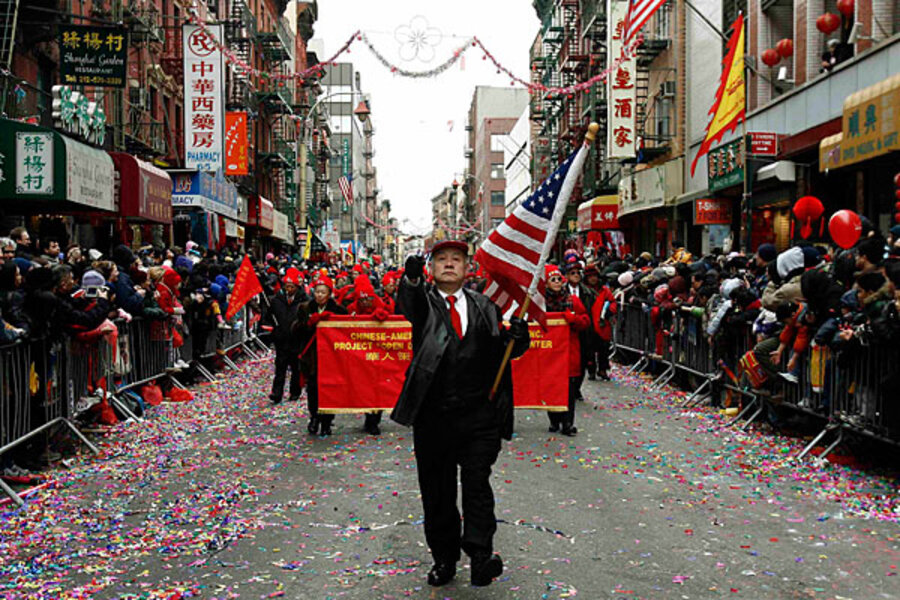How Asians displaced Hispanics as biggest group of new US immigrants
Loading...
Asians now make up the largest share of immigrants – both legal and illegal – coming to the United States annually, outpacing Hispanics, according to a nationwide study by the Pew Research Center in Washington.
The study, released Tuesday, found Asian Americans are not just the fastest-growing racial group in the US, but they are best educated with the highest incomes.
The increase in Asian immigrants coincides with a decline in Hispanic immigration. Stricter immigration enforcement in the US takes a greater toll on Hispanic immigrants because data show they are more likely to be here illegally. For example, 45 percent of Hispanic immigrants are undocumented compared with about 13 percent of Asian immigrants, according to the survey.
Moreover, the economic downturn has lessened the incentives for working-class immigrants to cross the border from Mexico.
“To some extent, the story is about continuing immigration from Asia, but it’s also about the shoe dropping on the other foot, which is the fact that Latino immigration has dropped sharply,” says D’Vera Cohn, senior writer for Pew and a co-author of the report.
According to the report, the number of immigrants from Asia first outpaced Hispanics in 2010, when about 430,000 Asians arrived compared with 370,000 of Hispanics. Overall, the Asians made up 36 percent of legal and illegal immigrants compared with 31 percent for Hispanics. The gap between the groups had been narrowing for a decade, starting in 2000 when Hispanics represented 59 percent of new immigrants and Asians 19 percent.
The numbers reflect “fundamental changes” in the US economy away from manufacturing and toward sectors that favor technical skills in science and engineering, says Yu Xie, a sociologist at the University of Michigan in Ann Arbor and co-author of “Is American Science in Decline?”
In order to better compete on the global market, American companies are recruiting heavily on college campuses and abroad, primarily in India, China, and South Korea.
“Native-born Americans do not do well in acquiring technical skills to field the jobs that are demanded by the US economy. So some of that demand is met by foreign students and immigrant scientists,” Mr. Xie says.
Asian immigrants are more likely than immigrants from all other nations – 27 to 8 percent – to arrive with employment visas. Ms. Cohn says immigrants from India and China combined represent the largest share of immigrants who are admitted with employment visas for high-tech and other specialized fields.
“When you are talking about highly-skilled jobs, Asian immigrants are among the country groups that are most likely to have those kinds of visas,” she says.
According to Pew, workers coming from Asia tend to be more educated. Sixty-one percent of adult immigrants from Asia have a bachelor’s degree, which is double the share of all non-Asian arrivals. Of all engineering PhDs granted in the US in 2010, 45 percent were from Asian students, both US natives and foreign-born.
Pew also suggests the rising numbers of Asian Americans will help Democrats, as nearly half say they lean Democratic and 28 percent say they lean Republican. But that does not guarantee votes in the November general election, because one-third are not yet permanent citizens, says Kim Parker, associate director of Pew Social and Demographic Trends.
Today, Asians make up 5.8 percent of the US population, up from less than 1 percent in 1965.





